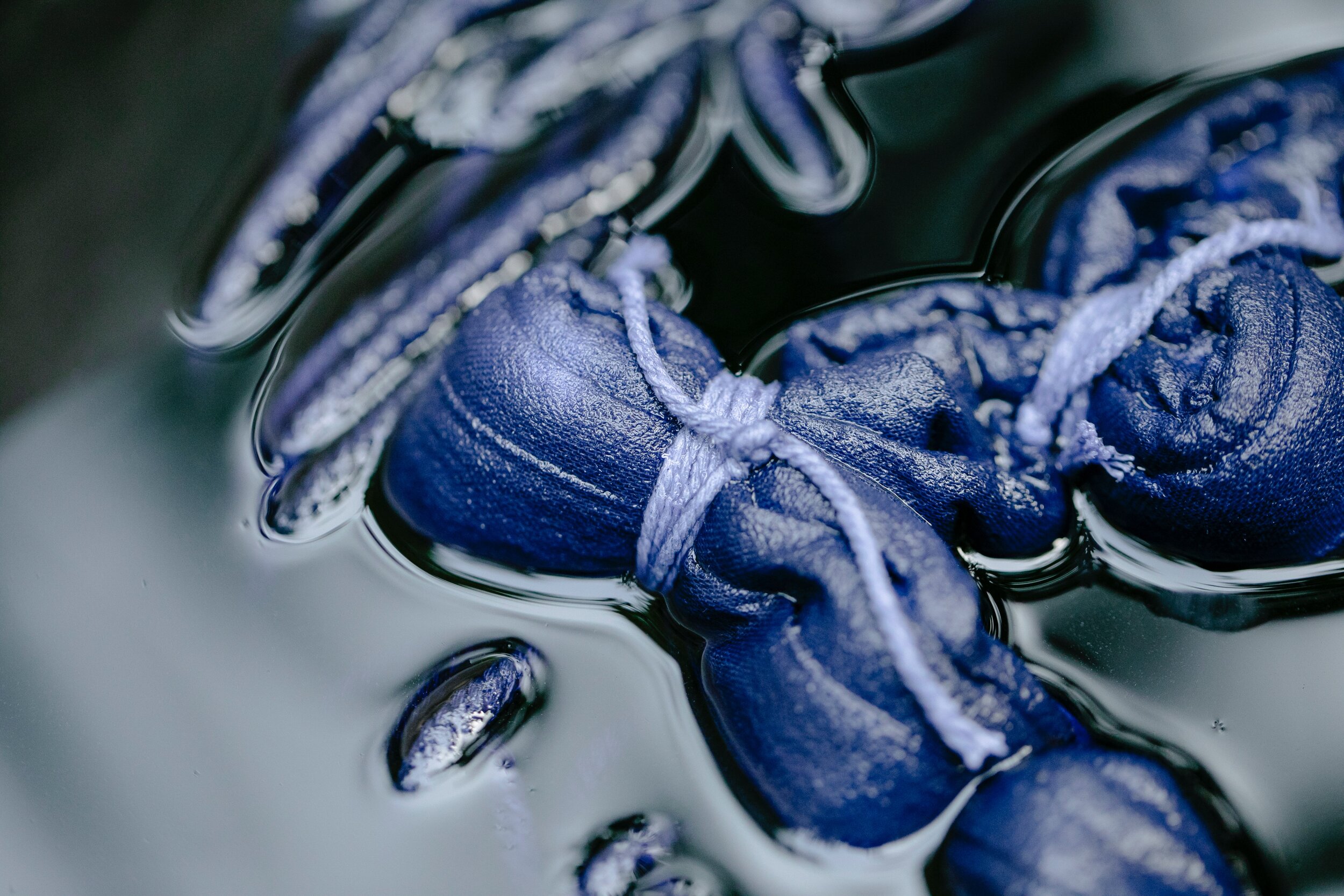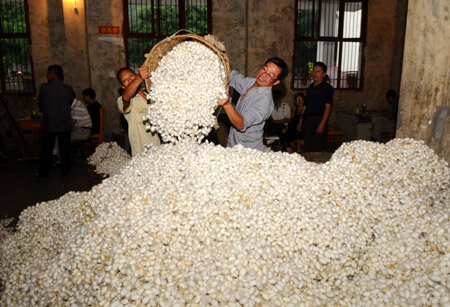About Silk
Silk is both a fiber and a fabric. The fiber is made by the silkworm when it spins its coccoon for its transition to a moth (Bombyx mori). During the coccoon stage, silk-makers will unravel the silk, spin it and transform it into thread that can be turned into a variety of fabrics. This is, unfortunately, fatal for the silkworm. However, enough silkworms are allowed to mature to continue the species which is now completely dependent on humans for survival.
Other insects also produce silk, but only the fiber from the silkworm moth has been able to be harnassed to make fabric. Scientists are making headway in research on creating spider silk in the laboratory; it is 10 times stronger than kevlar and thus would be a valuable textile for military and other uses.
However, it is silk from the silkworm that made the Silk Road famous. Silk has a lustrous, almost shimmery finish. This is because the fiber is triangular in shape like a prism and refracts light at different angles; this gives silk its characteristic and prized sheen.
This is the life cycle of the silk worm; you can buy live silkworms (apparently they’re high protein, low in fat and perfect for hungry pet reptiles) at the Silkworm Shop.
The process of going from coccoon to fabric is labor-intensive and takes many steps. Traditional silk-producing countries include all of East Asia, including southeast Asia: Thailand, Cambodia and India. Archaeological evidence of silk production has been found in China dating back to 3500BC. Similar evidence has been discovered in India, suggesting that silk production did not come from a single country, but was discovered and exploited by several peoples.
Homer mentions Odysseus wearing a silk shirt in the Odyssey, and certainly by Roman times, silk was considered a valuable trade commodity. The emperor, Tiberius, passed laws that forbade men from wearing silk clothing, but the laws could not stop the popular practice. Everyone, it seemed, loved the sumptuous, yet practical fabric.
Despite their best efforts, the Chinese were unable to prevent the Europeans from smuggling silkworms and the secrets of their culture to their own countries. According to legend, Justinian monks hid silkworm eggs in their canes and walked from China to Constantinople with their precious contraband. This began the silk industry in the Byzantine empire. At first, the silk was only used for garments worn by royals or high diplomats, but within a few centuries, the practice of making silk fabric spread to other countries.
Although according to the Hadith (or commentaries on the teachings of the Koran), silk was forbidden for Muslim men to wear, Muslim women were still allowed to wear silk and the Muslim Moors brought silk production with them as they conquered Spain — along with other cultural artifacts like reading, bathing, henna and playing chess.
Venetian merchants were as deeply involved in silk trade as they were spices, and gave incentives for silk growers and producers to move to Italy. Venice’s influence waned by the end of the 12th century, but the production of silk spread to other city-states and brought wealth and commerce to Como, Florence and Lucca. Italian silk was so popular that kings in France and England invited silk producers to create industries in their own countries and colonies.
Currently, Japan is the largest exporter of silk cloth, closely followed by China. However, silk from Thailand, Cambodia and India each have their own special characteristics and are highly prized. The process from silkworm to finished fabric remains remarkably similar to ancient methods. Here are some photos from Irene Butler’s article on her trip to Thailand which is published on the Transitions Abroad website.
It starts with gathering coccoons.
How silk is made
This is a silk worm inspecting it’s siblings’ cocoons.
Thousands of silk worm cocoons are gathered.
These coccoons are then boiled so that the thread can unravel as a single strand; boiling also strengthens the fiber.
Then the threads are put on a loom to weave beautiful cloth.






